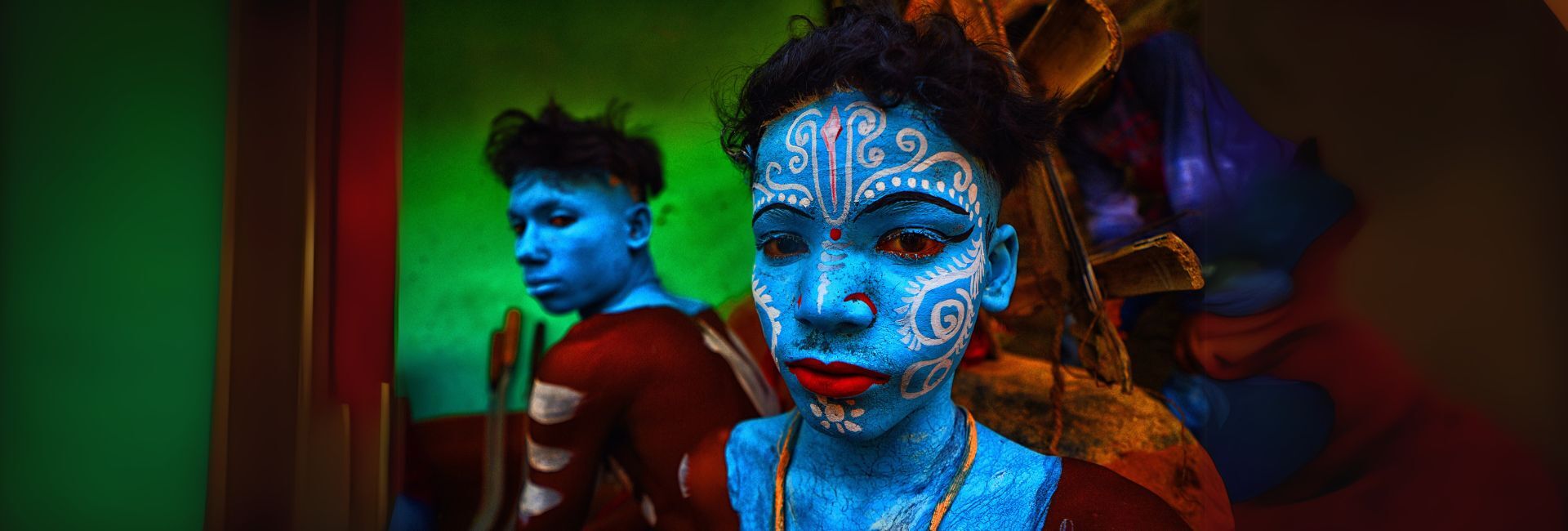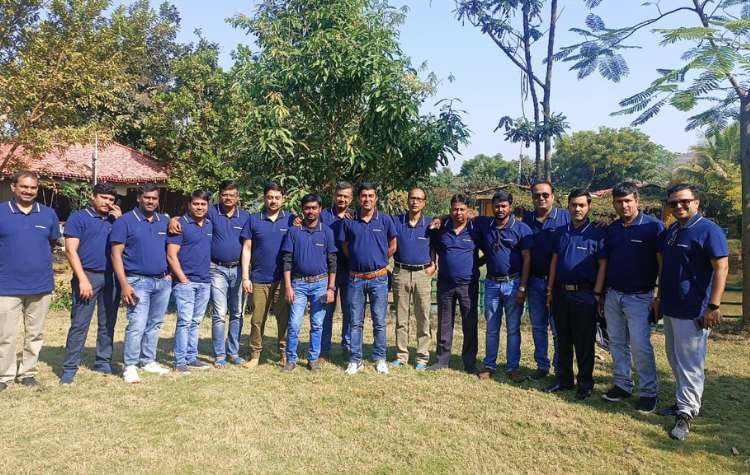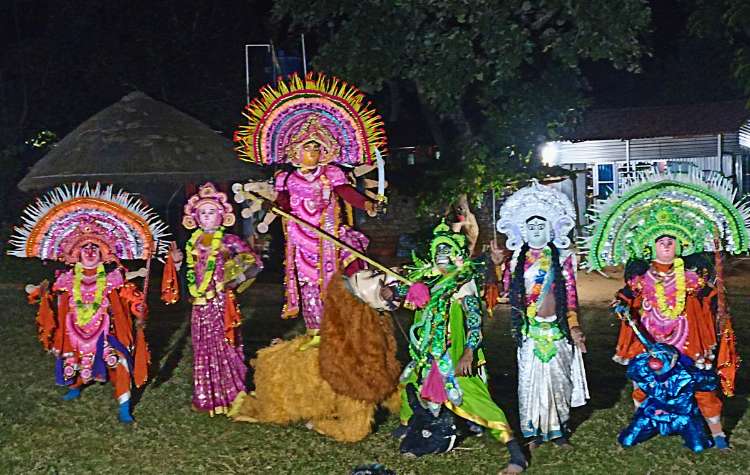
Chhau Dance in Purulia
The Dance of Masks, Myths & Martial Grace – Where the Body Becomes the Language of the Land In the red-earth heart of Purulia, amid rolling sal forests and misty Ajodhya hills, a rhythm rises every spring – deep, resonant, and powerful. It is the sound of Dhamsa-Maol, calling the people together for a performance older than memory. This is Chhau, the martial dance of Purulia – a dazzling blend of combat, theatre, mythology, and devotion. At Bon Polashi Eco Hut & Camp, nestled near Murguma Lake, travellers often hear the beats echoing from nearby villages – the same rhythm that has shaped Purulia’s identity for centuries. To watch a Chhau performance here is to witness art, strength, and spirituality fuse into a single living breath. 🕉️ The Pan-Indian Chhau Tradition: Origins and Meaning Chhau is a semi-classical dance tradition from eastern India, practiced across West Bengal, Jharkhand, and Odisha. Its name and form carry a dual heritage – part martial art, part divine theatre. What makes Chhau extraordinary is its synthesis: it combines ancient tribal movements, classical Natyashastra techniques, and folk storytelling, creating an art form that feels both sacred and fierce. The term Chhau itself carries multiple interpretations: Some trace it to the Sanskrit “Chhaya” (shadow or mask), highlighting the use of masks in the Purulia and Seraikella styles. Others link it to “Chhauni” (military camp), underscoring its martial foundation. In Purulia Chhau, these two meanings converge – the mask and the martial co-exist. Dancers wear heavy, ornate masks while performing explosive acrobatic movements inspired by combat. It’s both ritual and resistance, performance and prayer. 📜 The Land and Its Legacy – 18th Century Purulia Purulia’s association with Chhau traces back to the 18th century, when local kings and landlords began patronizing village martial performances as part of spring festivities. Over time, these evolved into a highly structured form – Chaitra Parva, the festival of Chhau. Rooted in the worship of Lord Shiva and Shakti, the dance became both religious and communal. It was – and still is – an egalitarian festival, uniting tribal, rural, and urban people through movement, music, and myth. Even today, when the drums begin during Chaitra Parva, the villages around Murguma and Balarampur awaken – men gather to rehearse combat steps, mask makers in Charida paint their final strokes, and the red earth prepares to host divine battles once again. ⚔️ Comparative Styles: The Purulia Power Chhau has three main regional expressions: Purulia Chhau (West Bengal) Seraikella Chhau (Jharkhand) Mayurbhanj Chhau (Odisha) All share a martial base but differ in mask use, movement, and aesthetics. Purulia’s style, however, is the most dramatic – an explosion of energy, colour, and theatre. Comparative Stylistic Analysis of the Three Chhau Forms Feature Purulia Chhau (West Bengal) Seraikella Chhau (Jharkhand) Mayurbhanj Chhau (Odisha) Use of Mask Extensive, full-face, elaborate, character-specific masks, often requiring accompanying body costumes.¹ Symbolic, stylized masks (constrains movement).¹ No masks used during performance.⁹ Movement Emphasis Acrobatic, highly energetic, athletic; emphasis on exaggerated bodily gestures to compensate for masked face.⁵ Subtle movements (grieve bheda, siro bheda); constrained stance (dharan).⁵ Highly acrobatic; emphasis on facial expression and upper body movement.⁵ Primary Narratives Combat episodes, explicit victory of good over evil (Puranas, Epics), focusing on Badh.⁵ More abstract, lyrical, or symbolic themes (often practiced solo or duet).⁵ Dance dramas from Epics (using facial expressions to convey emotion).¹ Martial Influence Retains strong, explicit influences from martial arts.⁵ Influenced by parikhanda, but movements are highly refined by royal patronage.⁵ Influenced by parikhanda; refined by royal and state patronage.⁵ 💪 Kinetic Vocabulary – Where Dance Meets Combat The Purulia Chhau dancer is not just a performer – he is a warrior, athlete, and storyteller. Each movement is born from martial practice, especially the ancient sword-and-shield system of parikhanda. 🔥 Martial Intensity and Athleticism Unlike the fluid grace of classical dance, Chhau demands strength, stamina, and fearlessness. Dancers leap, spin, and roll in explosive sequences that mirror ancient battlefield moves. Every step – known as khel – is part dance, part mock combat. Chalis (gaits) and topkas (jumping steps) mimic the walks of birds and beasts, while group formations recreate war scenes from epics like the Ramayana and Mahabharata. 🌾 Movement Semantics – Chalis, Topkas, and Uflis Each motion has meaning. Chalis and topkas evoke animals and gods; uflis imitate everyday village life – a woman grinding grain, a farmer plowing the field – rooting divine drama in local reality. The mask – heavy and immovable – shapes the very choreography. Since faces cannot express emotion, every feeling is communicated through body language and posture. Thus, Purulia Chhau thrives on clarity of emotion – anger, heroism, and devotion are carved into the air through action, not words. 🕉️ Tandava and Lasya – Gender in Motion Though performed exclusively by men, Chhau embodies both Tandava (masculine vigor) and Lasya (feminine grace). The dancers portraying female deities like Durga or Saraswati must blend strength with elegance, channeling energy into controlled beauty – a stunning testament to fluid gender expression within folk performance. 🎭 Masks of Purulia – The Soul of the Dance Nowhere else in India is the mask (Mukhosh) as central as it is in Purulia. These masks are more than props – they are the faces of gods and demons, crafted with devotion in Charida, famously known as Mukhosh Gram (Mask Village). 🏡 Charida – The Village That Wears a Thousand Faces At the foothills of the Ajodhya range, the village of Charida hums with artisans’ hands. Every family here carries the legacy of mask-making – an art passed through generations. From bamboo frames to clay modeling and paper layering, each step is meticulous. When painted, the masks burst into life – their eyes fierce, their expressions divine. Visitors to Charida often find entire house walls lined with masks – lions, gods, demons – drying under the Purulia sun. 🎨 Craftsmanship and Materiality The process involves: A clay base modeled by hand. Layers of paper pulp for strength. Drying and painting




























